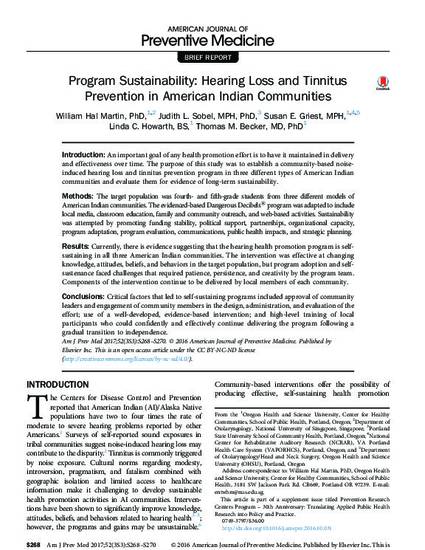
- Hearing Disorders -- Prevention & control,
- Program Development,
- Program Evaluation,
- Health Promotion
INTRODUCTION: An important goal of any health promotion effort is to have it maintained in delivery and effectiveness over time. The purpose of this study was to establish a community-based noise-induced hearing loss and tinnitus prevention program in three different types of American Indian communities and evaluate them for evidence of long-term sustainability.
METHODS: The target population was fourth- and fifth-grade students from three different models of American Indian communities. The evidenced-based Dangerous Decibels® program was adapted to include local media, classroom education, family and community outreach, and web-based activities. Sustainability was attempted by promoting funding stability, political support, partnerships, organizational capacity, program adaptation, program evaluation, communications, public health impacts, and strategic planning.
RESULTS: Currently, there is evidence suggesting that the hearing health promotion program is self-sustaining in all three American Indian communities. The intervention was effective at changing knowledge, attitudes, beliefs, and behaviors in the target population, but program adoption and self-sustenance faced challenges that required patience, persistence, and creativity by the program team. Components of the intervention continue to be delivered by local members of each community.
CONCLUSIONS: Critical factors that led to self-sustaining programs included approval of community leaders and engagement of community members in the design, administration, and evaluation of the effort; use of a well-developed, evidence-based intervention; and high-level training of local participants who could confidently and effectively continue delivering the program following a gradual transition to independence.

© 2016 American Journal of Preventive Medicine. Published by Elsevier Inc. This is an open access article under the CC BY-NC-ND license.